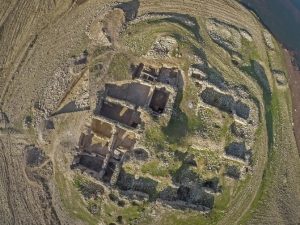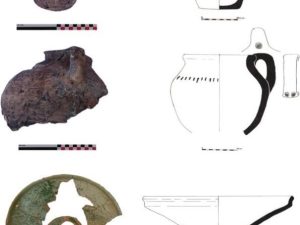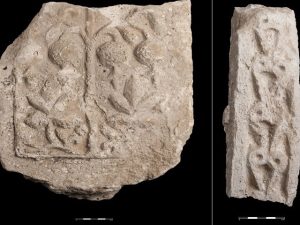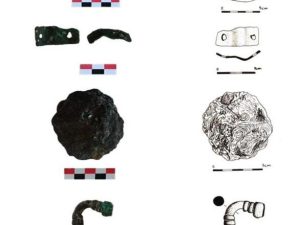Gowriyehگوریه
Location: The site of Gowriyeh is located in western Iran, Ilam Province.
33°54’27.3″N 46°08’30.2″E
Map
Historical Period
Sasanian, Islamic
History and description
Gowriyeh is a prominent Sasanian site on the south bank of the Kangir River, some 10 km southwest of the small town of Zarneh, and 60 km northwest of Ilām. The location of the site is significant in that it is in the late Sasanian/early medieval province of Māsabadhan/Māsabazan (Māh Sobūdān), mentioned in medieval sources of the tenth century, notably in Ibn Khordadbih's Al-masālek wa’l mamālek (for a full discussion, see P. Schwarz, Iran im Mittelalter, pp. 462-463; G. Le Strange, The Lands of the Eastern Caliphate, p. 202; Khosravi, Gowriyeh, A Manor House from the Sassanid Era, pp. 16-18). Due to its mild climate and beautiful scenery, the region attracted Sasanian and medieval rulers and nobles for hunting and leisure. The excavated remains consist of a rectangular building of 852 m², including rooms and courtyards. The structures are in rubble masonry with semi-fired bricks covered with plaster (fig. 1). The building at Gowriyeh was built directly on the bedrock and roofed with barrel vaults. Architectural structures at Gowriyeh include rectangular or rounded piers and columns, arches, vaults, and stucco decorations with pebbles and half-baked beaten gypsum mortar as construction material.
Archaeological Exploration
In 2005, following the beginning of the construction of a dam on the Kangir River in the borderland of Iran-Iraq, a series of archaeological rescue operations and salvage excavations began in the region. It was completed in the winter of 2015 and loaded with water. In 2015, a team of archaeologists led by Leila Khosravi excavated the site of Gowriyeh. As a result of the flooding, the site of Gowriyeh was completely submerged and destroyed.
Finds
Pottery: The most common forms include jug, plate, teapot, small and large vats, and as such. The pottery found at Gowriyeh shows a wide array of types from different regions. Most of the ceramics are from Sasanian and early Islamic periods (fig. 2).
Stucco: The building at Gowriyeh has a number of decorative elements such as friezes, and pilaster columns in stuccos that shows a local tradition (fig. 3).
Metal objects: The metal objects including bronze nails, latch bolts, and tallow-burner related to the Islamic period settlement. Also, some glass artifacts were also identified during the excavations; including various glass sherds in yellowish green, light greenish blue, and light brown colors (fig. 4).
Bibliography
Khosravi, L., “Newly Found Stucco Remains from the Sasanian Noble Residence at Gowriyeh and Jahāngir near the Kangir River of Eyvan, Ilam Province”, Pazhuhesh-hā-ye Bāstānshenāsi-ye Iran, vol. 10 (24), 1399/2021, 141-167. In Persian
Khosravi, L., Gowriyeh. A Manor House from the Sassanid Era, Tehran, 1399/2020. In Persian.
Khosravi, L., “The Description and Analyze of Architecture Elements of Gowriyeh Building, Ilām,” Pazhuhesh-hā-ye Bāstānshenāsi-ye Iran, vol. 11 (30), 1400/2021, 173-198.
Khosravi, L., “New Archaeological Excavations of the Jahangir and Gowriyeh manor Houses in the West of the Sassanid Empire,” Iran, vol. 59/2, 2021
Author: Leila Khosravi
Originally published: July 16, 2022
Last updated: January 10, 2025





































































































































